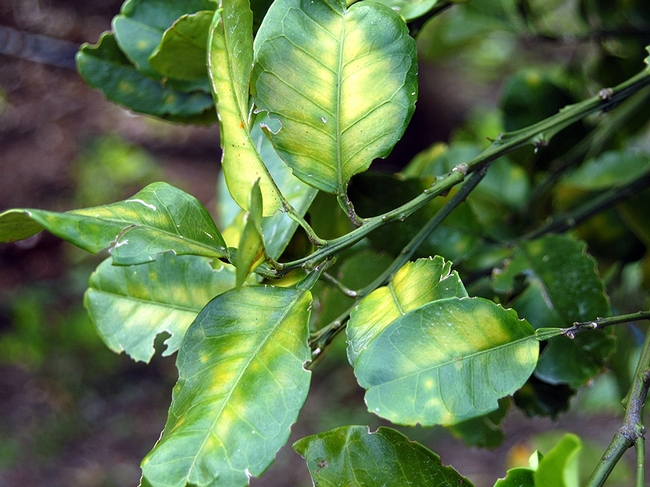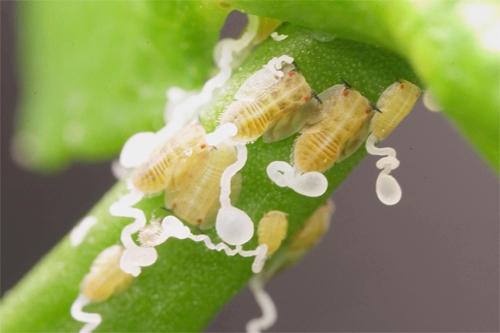Huanglongbing is a growing threat to California’s citrus industry
Asian citrus psyllid was first identified in California in 2008, and has been found from San Diego and Imperial counties in the south, all the way to Sacramento County in the north. See a map of Asian citrus psyllid and huanglongbing distribution in California.
UC Agriculture and Natural Resources specialists and advisors are working with the citrus industry, USDA and CDFA to control ACP populations and keep HLB contained while researchers search for a cure for the disease.
In order to find and remove infected trees before ACP can spread the disease to other trees, UC scientists are focusing research on early HLB detection technologies (EDTs). When infections first start, the bacteria are in just a few leaves. If the sampler doesn't collect those leaves, the disease can be missed. It can take one to two years for the bacteria to distribute itself throughout the tree so this sampling error doesn't occur.
Early detection technologies use whole tree responses to early infections. For example, Carolyn Slupsky, food science and technology professor at UC Davis, measures changes in tree metabolism (its day-to-day chemical function) when it becomes infected. Every leaf on the tree is connected to the tree's metabolism, so it doesn't matter which leaf is collected. This type of test can detect an infected tree within weeks or months after infection instead of years.
Scientists are also studying ways to modify ACP so the insects are unable to spread HLB, and studying the use of conventional breeding, genome editing or genetic engineering to develop disease-resistant citrus. Read summaries of the research here.
Keeping Asian citrus psyllid and huanglongbing disease at bay depends in large part on the active involvement of commercial citrus growers and California residents who have citrus trees in their home landscapes. The UC ANR Asian Citrus Psyllid Distribution and Management website provides detailed guidelines for growers and residents to monitor for Asian citrus psyllid and huanglongbing, and learn about options for reducing psyllid populations and responding to the disease if it's in your area.
View a four-minute video that shows how to monitor for ACP presence in residential citrus:



